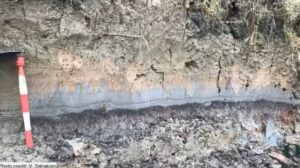
It’s generally accepted that a massive Cascadia earthquake occurred along the British Columbia-Washington-Oregon-N. California coast on January 26, 1700. The earthquake was a result of a rupture of the plate boundary between the North American plate overriding and subducting the Juan de Fuca plate. The evidence for the magnitude and precise timing of the quake includes tsunami deposits and dendrochronology dating at many places along that coastline, and records of a “ghost” tsunami at several locations in Japan.
In a Sept. 24, 2024 presentation for Central Oregon Geoscience Society, Diego Melgar of University of Oregon explained earthquake modeling that is seeking to match the earthquake evidence. It turns out there may be millions of possible scenarios where an initial 8.1 to 9.2 magnitude quake followed by up to 5 lesser magnitude aftershocks up to months later could potentially fit the data. That’s not really good news for the Cascadia region, because multiple giant quakes would be no less hazardous than one enormous one.
The geological history of the Cascadia subduction zones suggests that it experiences very large earthquakes every few centuries (between every 240 years and every 500 years). The question now is whether these temblors always occur as a single huge earthquake or if sometimes they’re a series of very big ones. Better understanding the nature of the earthquake(s) is important for estimating future tsunami hazards and for developing building codes, disaster response plans, and other critical earthquake-dependent planning.

Diego expects continued modeling that considers data from turbidites and tsunami deposit thicknesses may help narrow the possible scenarios, but he stresses that even an 8.1 magnitude quake can be quite devastating. “The tsunami might not be as large from an 8.1, but the shaking can be really intense,” Melgar said. “It’s just dangerous in a different way. Indeed, a decade in which giant quakes hit every two or three years might even be more devastating to people living in the region than a single quake hitting every few hundred years. That’s why it’s important to get to the bottom of which scenario is more likely.”
View the recording of Diego’s presentation here or read the “Was a humongous Cascadia earthquake just one of many?” article in Live Science by
